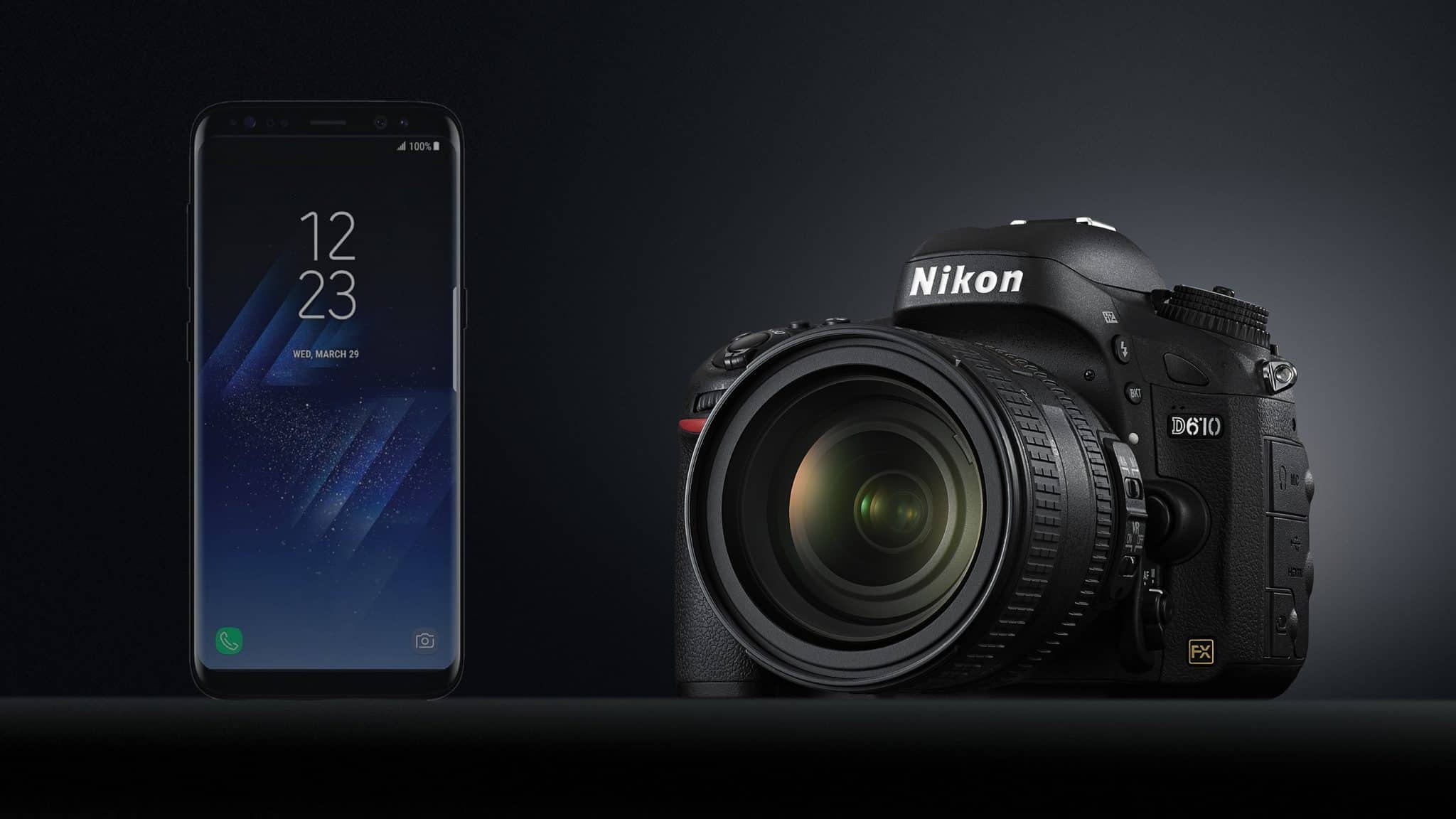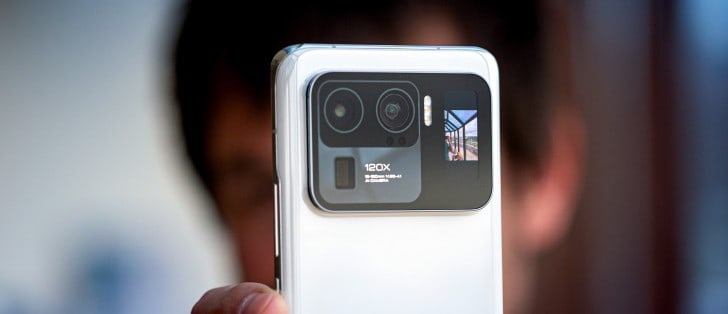The current smartphones have become so advanced in the camera tech department that they produce high-resolution quality images and some of the current flagships on the market can even hold their own against some older DSLR cameras. And, with smartphone cameras being that good, fewer people decide to spend money on an actual digital camera these days.
A similar change is happening in today’s amateur photographers. Mobile phone cameras became so good that people aren’t buying as many digital cameras as they used to be. You have your smartphone almost all the time, why carry another device? The type of camera you need depends on the type of photos you want to take.
Smartphone Camera vs Digital Camera
Surely, when buying a smartphone, looking at the technical specifications and making a comparison between the pros and cons is one of the first things everyone does. Even when the primary feature you are looking at is decent camera performance.
That way you can make the best decision on what smartphone camera is the best. When deciding on whether to buy a camera or a smartphone, perhaps one of the most important things to do is to look at the advantages and disadvantages of each option so that you can be able to make an informed decision.
With that being said, let’s go over the main benefits of having a phone over a digital camera when it comes to taking photos in the rest of the article so you
Smartphone Camera Pros
Let’s go over the main benefits of having a phone over a digital camera when it comes to taking photos:
- Point and Shoot -Taking out your phone and snapping photos is superior in terms of speed, convenience and ease of use when compared to a digital camera. You don’t need to attach lenses or get the camera out of the bag before you take the shot, which takes some time. Even if you have the DSLR camera hanging around your neck, taking a photo will still be miles slower than doing that with a smartphone.
- Edit Photos in a Minute: Besides shooting a picture in a second, you can also edit it in a manner of minutes by using you smartphone. There are a lot of free dedicated photography apps on the PlayStore Apple Store to help you bring your shot to perfection. Find that perfect white balance, bump up the saturation or even apply a black and white filter to your picture for a more dramatic look. You can do it all on your smartphone without the need to transfer the photos to a laptop or a PC and edit them in Lightroom or a any other pro software that costs money.
- Share on the Go: Sharing photos in seconds is also possible when using a smartphone as your primary shooter. You can share it on social media by either posting it on your account or in chat to your friends and family. Or maybe mail the photos to your coworker if needed.
- View Photos in High Resolution: Since smartphones have high-resolution screens with big PPI count, you can view the photos you take in high resolution. Digital cameras on the other side, have low-res small preview screens.
- Bang for Your Buck: A lot of casual and amateur photographers who mainly take pictures to post on social media don’t want to spend $500 or more on just a digital camera. especially if they can have a smartphone that makes decent photos to suit a variety of needs besides just taking photos. They’re happy with the photos they take with their smartphone.
Smartphone Camera Cons
On the other side, the main cons of using a smartphone as your primary camera for taking photos over a digital one are:
- Small Sensors – Smartphones have recently started getting bigger camera sensors which helped in making a significant leap in terms of camera quality but are still nowhere near the mid-level and top-level DSLR Cameras on the market. Yes, they might be better than some older digital camera models but are still fighting to provide the user a photo quality that’s near DSLR-like. With that being said, sensor size still has a big impact on image quality.
- Short Battery Life – Using your smartphone camera for a long time can be pretty intensive to the processor and get your phone hot while draining the battery faster. That’s because there’s a lot of post-processing going on after you snap a photo to enhance the photo itself with the use of AI.
- Low Light Performance – Low light performance on smartphone cameras has improved tremendously and is fantastic when you compare one smartphone to another. But when compared to a digital camera, these two are in a different class of their own with the smartphone providing the subpar experience if you are really into night photography.
- Lacking Decent Optical Zoom – Even by today’s improvement in smartphone camera technology, with phones getting x100 and x120 (and supposedly x200 with the next Samsung Galaxy S22), the optical zoom on smartphones is still not the same as on a DSLR camera. There are no multiple lenses shifting to provide you lossless zooming on subjects but instead only one lens that provides maybe x3 or x5 optical zoom and there rest being digital. Yes, the notorious digital zoom is still the main player behind all the marketing schemes regarding telephoto cameras on smartphones.
Digital Camera Pros
At the beginning of the article, we’ve mentioned how fast smartphones are improving in the camera department but on the other side, digital cameras are also getting better by the year. If you want to really get into photography and work professionally as one, then the choice of a digital camera over a smartphone is a no-brainer.
Let’s take a look at some of the pros of using a digital camera for photography rather than a smartphone:
- Attachable Lenses: Unlike smartphones which are pretty much good only for photos at a medium-range, cameras offer a lot of versatility. You can attach a telephoto lens if you wish to take a very zoomed-in photo or a microlens for a close-up photo of a flower or a bug.
- Great Low Light Performance: The recipe for a good smartphone photo is a lot of light and a stationary subject. As long as these criteria are met, you can expect a decent shot. However, DSLR cameras have very big sensors and allow you full control over parameters like exposure by manually adjusting the lens aperture so you can let as much light into the sensor as you like. This way, you can take fantastic photos in both low-light and extremely well-lit environments.
- Long Battery Life: Digital cameras have a long-lasting battery life that enable you to take up to literally a thousand shots. And you can always buy a spare camera battery so you can replace it once the main is out of juice. That way you can stay all day outdoors taking shots.
Digital Camera Cons
While we took a look at the pros, let’s also have a look at the cons of having a digital camera as your primary shooter instead of a smartphone:
- Bulky – Digital cameras are often bulky meaning they weight more than your average smartphone, since you have to carry around not just the camera body but also all sorts of other attachments. Photographers usually carry lenses, camera flashes, tripods and batteries amongst other stuff. And depending on your preferred photography style or subject you wish to shoot, these attachments make the camera even more bulkier and hard to hold in your hands for a longer period of time. That’s why photographers mostly use tripods.
- Steep Learning Curve – Unlike a smartphone, digital cameras don’t favor the point and shoot method much. Pro photographers usually shoot in manual mode so they have full control over every parameter that may affect the composition and the subject. For anyone aspiring to become a great photographer, they need to learn the intricacies that come with photography to know how to better capture a subject and more.
- Expensive – Digital cameras can get pretty expensive, ranging from $500 up to $3000 for a high-end one, and that’s not even taking into account accessories like camera lenses, on-camera flashes, tripods and whatnot. There’s definitely a lot of up-front investment which doesn’t make any sense to casual or amateur photographers. Instead you could get a flagship smartphone with a top-notch camera and call it a day.
So What’s the Better Choice?
When it comes to snapping a shot right away, sharing it, or editing it immediately, then a smartphone is the better pick here. The camera is available in a second so you can snap a photo really fast, edit it in an app of your choice and share it on any social media if you want to.
It’s a lot more convenient to carry around a smartphone in your pocket instead of having a camera bag around your neck or even carrying a whole backpack just for the purpose of getting your digital camera and attachments like different lenses, on-camera flash, and more. But, again, that’s something only pro photographers would do.
Takeaway: So, unless you’re a pro photographer, you probably won’t take your digital camera with you every time you go out. But if you’re carrying a smartphone, the point-and-shoot camera is available whenever you need it in a matter of seconds. In addition, smartphone cameras are capable of doing some stuff that traditional cameras can’t.


